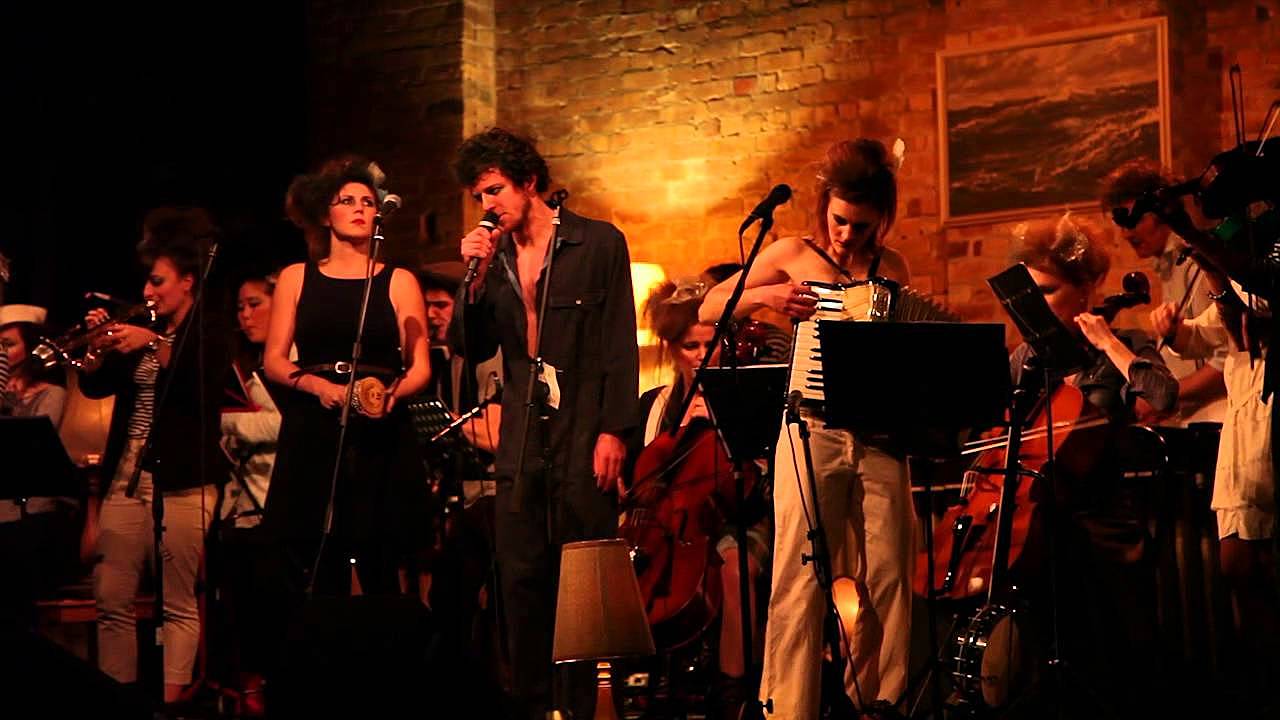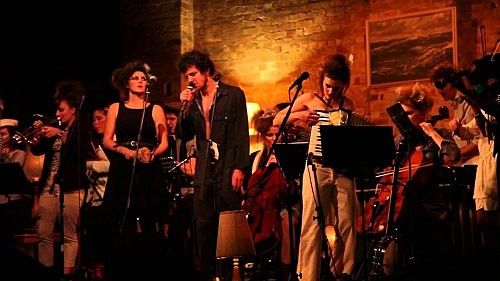Review: The Wilderness
More so than any desperate mash-up of symphony orchestras to Top 40 BBQ dub, Claire Cowan's Blackbird Ensemble are doing radical, vital and contemporary things with classical music in NZ, as Hayden Eastmond-Mein discovers.
As soon as I stepped inside the Q Loft, I forgave the strange smell that's been occupying the Q Theatre complex for the last couple of days. It's the kind of earthy, wet sock smell that makes paranoid people such as myself worry about a potential laundry mix up. In fact, it was emanating from the organic matter that makes up a stunning, eerie dead forest set designed by Celery Productions for the Blackbird Ensemble's latest show, The Wilderness.
It's not the setting you'd expect to find a chamber orchestra in, which is of course the point. Director Claire Cowan's ensemble does for classical music what no number of NZSO v Shapeshifter collaborations could ever really achieve: modernising classical music and making it more accessible to a wider audience without resorting to dumbing it down. But more so than the set design (and costuming, which matches the set's eeriness perfectly), it's Cowan's musical direction that really bridges the divide between chamber music and the young, gig-going audience.
The bulk of The Wilderness is set around Max Richter's recomposition of Vivaldi's Four Seasons. With such a well-known piece of music, this reworking operates as a sort of exhilarating acid flashback for those who appreciate but don't make a habit of listening to classical music. Soloist Amalia Hall's powerful and beautifully expressive violin playing carries the group through familiar and not-so-familiar movements, soaring above but never beyond, making full use of the theatrical crescendos and caesuras.
But it's when vocalist Jessie Cassin comes to the stage that the show really opens up. Along with her pure voice, the chamber group is suddenly joined by a wider range of aural textures as a tabla, guitar, banjo and accordion join the stage that's already full of violins, violas, cellos, harp, harpsichord and bass. The three numbers Cassin leads - Bjork's “Hyperballad”, Joanna Newsom's “Cosmia”, and Bat for Lashes' “Wilderness” - don't have the same urgency as Richter's Four Season (not many pieces of music do), but they have an intrigue and drama that's perhaps more captivating.
Transplanting chamber music to a space like the Loft isn't without its issues. There's a reason it's usually played in a specially designed wooden hall - the resonance of wooden surfaces not only allows the sound to fully envelop an audience, but it lets the musicians hear themselves within the context of the group. In such an acoustically dead space as the Loft - necessary for intimate theatre - the audience feels separate from the sound source, and the musicians - at least initially - seemed self-conscious.
But what you gain in the Loft is an intimacy that you wouldn't get in a concert chamber - the ability to see the expression on each musician's face, and the subtleties of the group's time-keeping sway. In the end, it's the performance of this talented group of musicians that encapsulates.
Claire Cowan and her Blackbird Ensemble are doing something vitally important for classical music in New Zealand, and you should really go see why.


